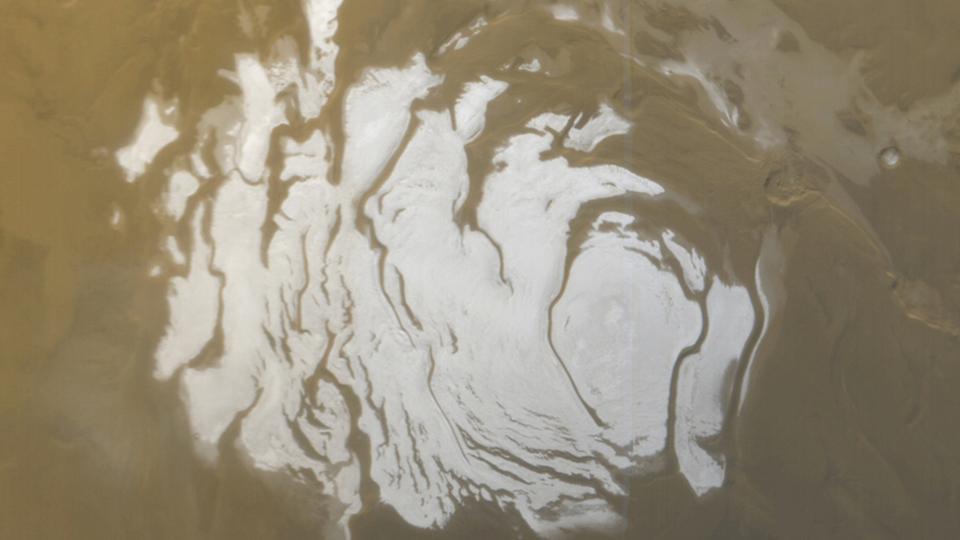Liquid water lake discovered on Mars
Scientists say have spotted what they say appears to be a large salt-laden lake under ice on the southern polar plain of Mars, a body of water they called a possible habitat for microbial life.
 The south polar cap of Mars as it appeared to the Mars Global Surveyor (MGS) Mars Orbiter Camera (MOC) on April 17, 2000. Courtesy NASA (Reuters)
The south polar cap of Mars as it appeared to the Mars Global Surveyor (MGS) Mars Orbiter Camera (MOC) on April 17, 2000. Courtesy NASA (Reuters)
A massive underground lake has been detected for the first time on Mars, raising hopes that more water – and maybe even life – exists there, international astronomers said Wednesday.
Located under a layer of Martian ice, the lake is about 12 miles (20 kilometers) wide, said the report led by Italian researchers in the US journal Science.
It is the largest body of liquid water ever found on the Red Planet.
“Water is there. We have no more doubt,” co-author Enrico Flamini, the Italian space agency’s Mars Express mission manager, told a press conference.
Mars is now cold, barren and dry but it used to be warm and wet. It was home to plenty of liquid water and lakes at least 3.6 billion years ago.





 This image provided by the ESA/INAF shows an artist’s rendering of the Mars Express spacecraft probing the southern hemisphere of Mars. At upper right is the planet’s southern ice cap. The inset image at lower right shows the area where radar readings were made. The blue triangle indicates an area of very high reflectivity, interpreted as being caused by the presence of a reservoir of water, about a mile below the surface. (AP)
This image provided by the ESA/INAF shows an artist’s rendering of the Mars Express spacecraft probing the southern hemisphere of Mars. At upper right is the planet’s southern ice cap. The inset image at lower right shows the area where radar readings were made. The blue triangle indicates an area of very high reflectivity, interpreted as being caused by the presence of a reservoir of water, about a mile below the surface. (AP)





